When times change, dissonant scenarios like these make sense: it also explains the popularity of what has come to be known as the “French
postcard,” seen in the gallery below:

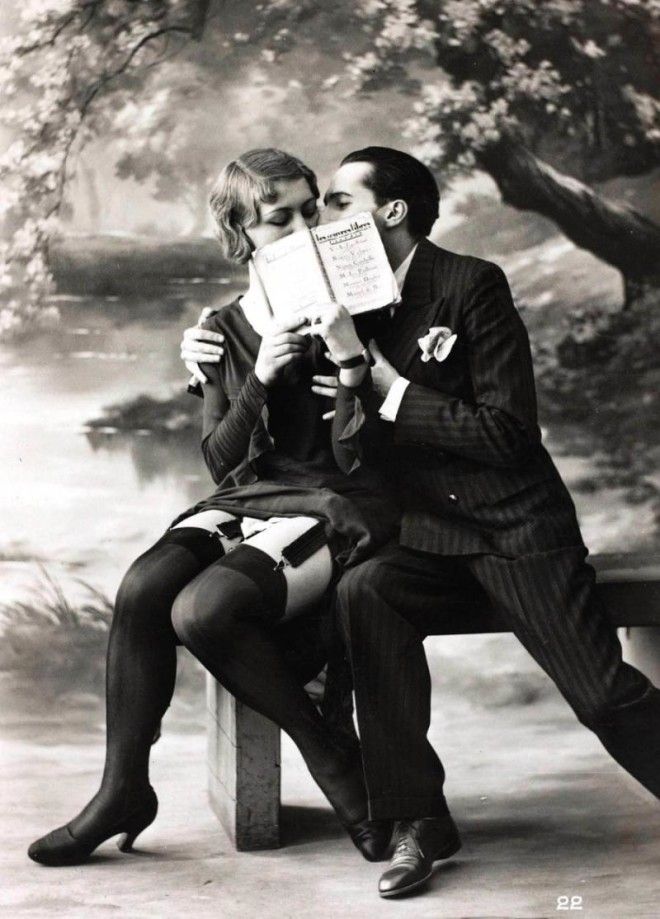
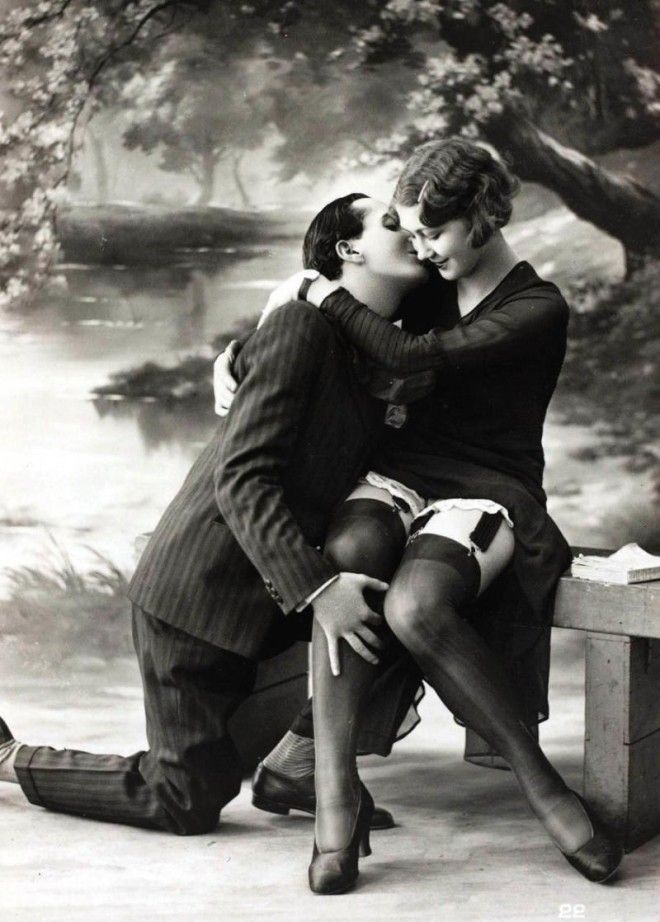
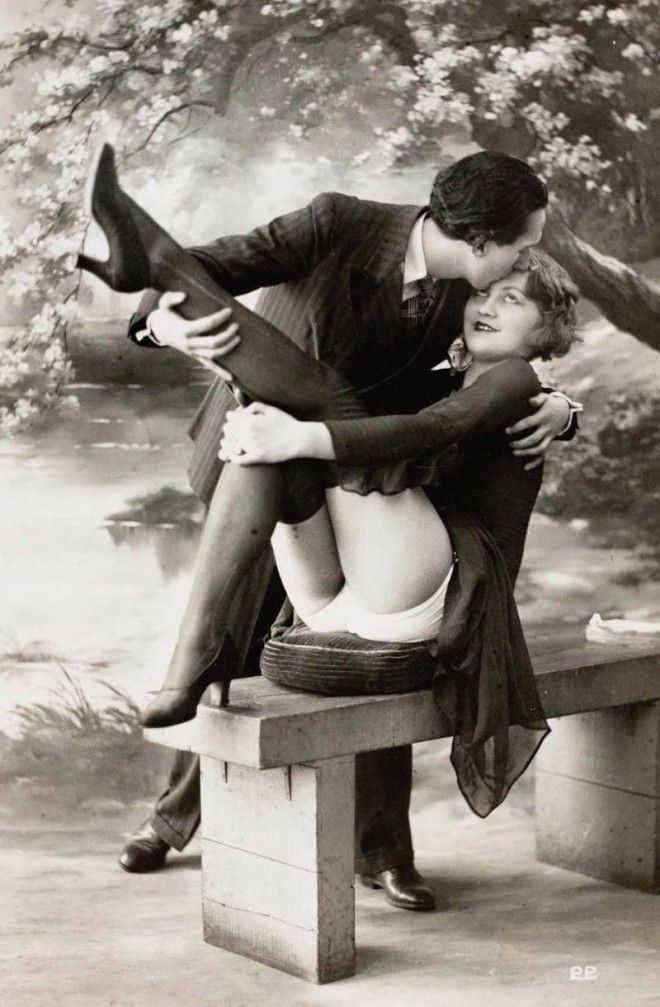
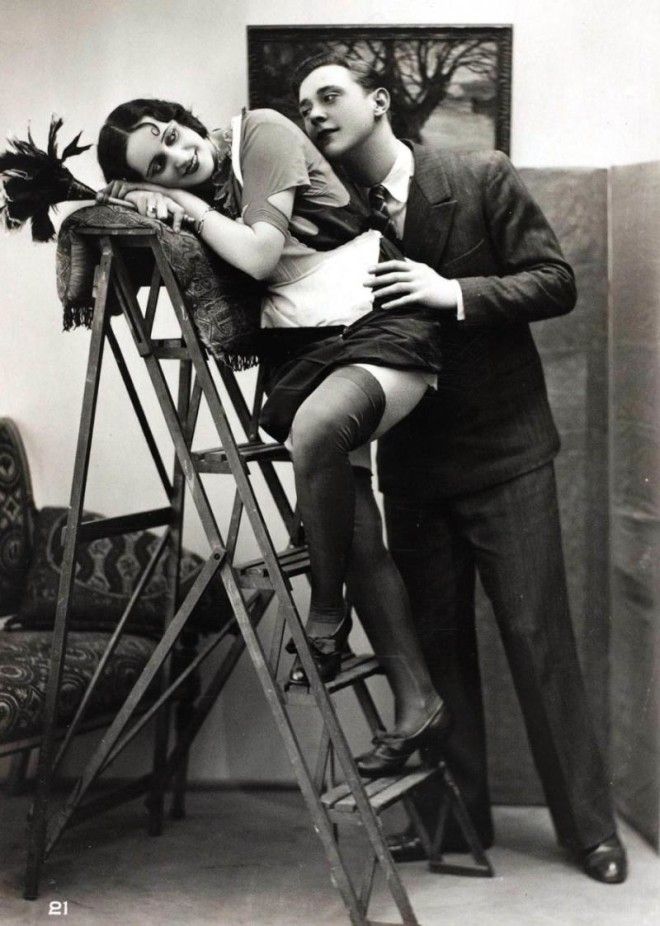
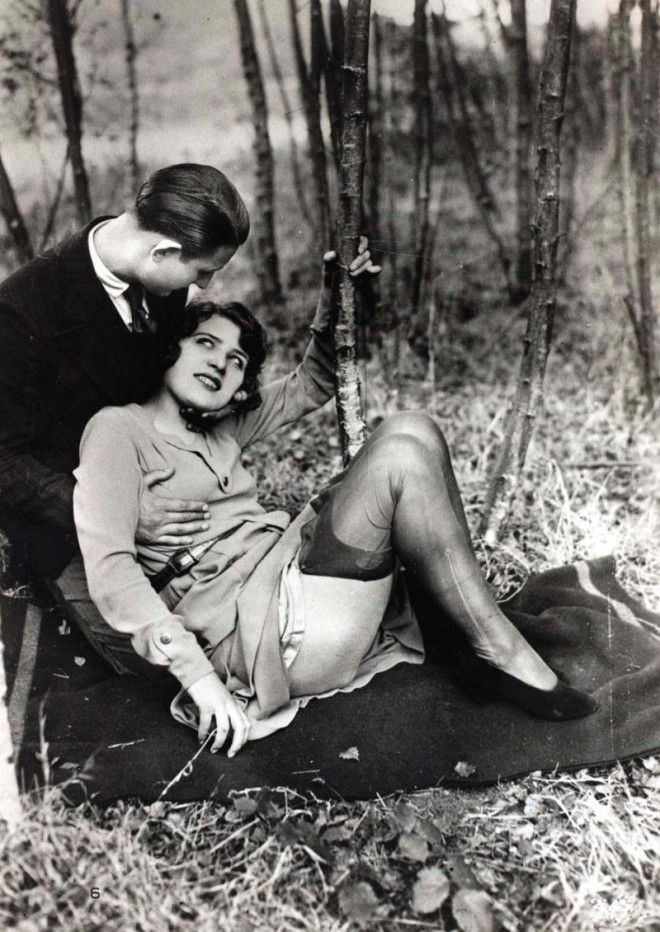
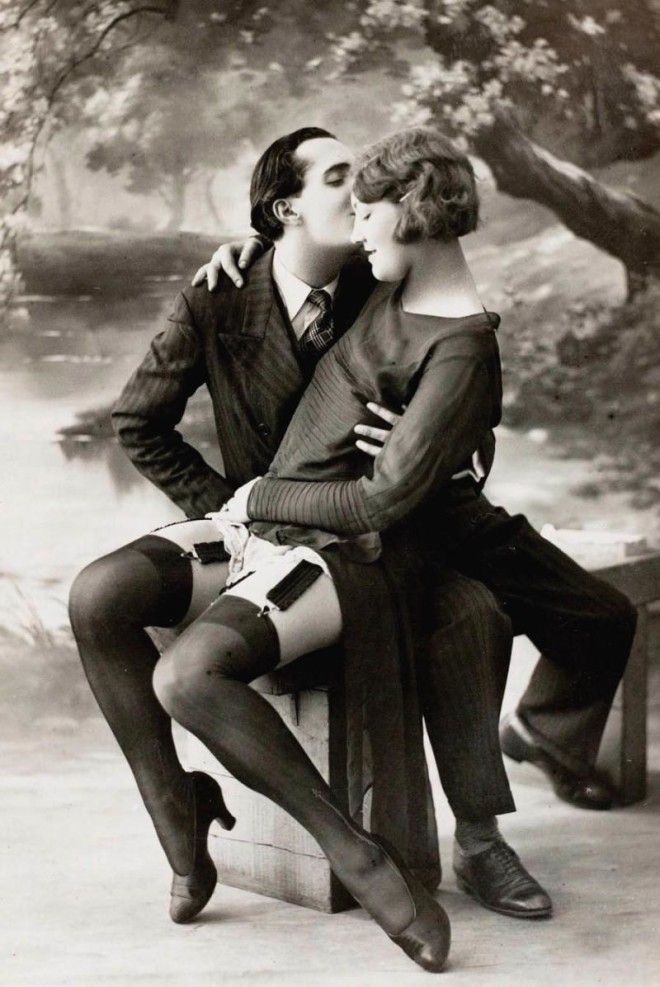



These early 1920s erotic postcards were produced in France, like the majority of similar, sexually-charged postcards of the era. In the United States, all cards were known as “French Postcards” no matter where they originated. In the 20s, the most commonly traded images contained deep plunging necklines, short skirts exposing garters, and panty peeks.
Though not as prevalent, it was also possible to find postcards featuring bared breasts, exposed derrières, and even full nudity.
Truly tame by today’s standards, the flirtatious images printed on thick cardstock were shocking to many at the time. Even in the Roaring 20s, many considered them to be pornographic.
As part of its campaign to legislate morality, the U.S. government prohibited the sending of French postcards via the U.S. Postal Service. Postcards were discretely traded in local stores, tobacco shops, and sold on the streets by French merchants. Photographers would typically use a false signature or mark to prevent tarnishing their reputation in their legitimate photography businesses–and to avoid run-ins with law enforcement.
Advertising
As with alcohol prohibition, the decision to make French postcards illegal had the effect of transforming their production into a very profitable business: the camera was still pretty new to the world, and few people possessed one. When–not if–people wanted one of these photos taken or printed, they had to head to an erotic photographer who could charge a high fee for their services.
Almost without exception, the identities of any of the French postcard models are unknown to this day. The threat of being fined or even imprisoned was more than enough reason for the models to use false names and wigs, and in many cases wear makeup in a way that would conceal their natural features.
By the turn of the next decade, motions to censor and govern public morality had failed: prohibition was repealed in 1933, and by the 1930s erotic photography had made huge gains in popularity and visibility.
Perhaps early 20th century composer Cole Porter said it best in the song “Anything Goes”:
“In olden days a glimpse of stocking was looked on as something shocking. Now heaven knows anything goes.”

